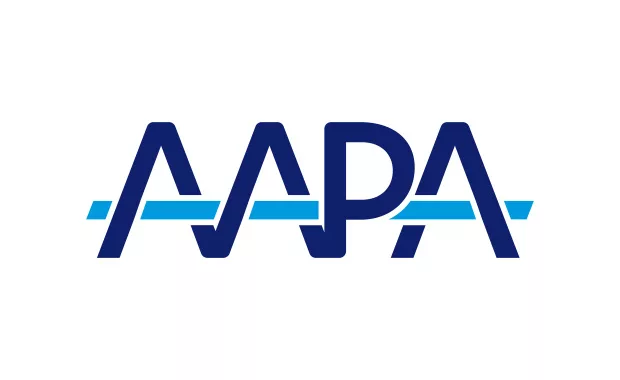2 PAs Give 5 Tips on Long-Acting Reversible Contraception
Walk Through Steps of Administering LARC in CME
January 4, 2021

Nisha McKenzie, PA-C, CSC, NCMP, IF, founder of Women’s Health Collective in Grand Rapids, Michigan, and Deanna Bridge Najera, PA-C, clinician consultant in Carroll County, Maryland, team up to talk about Long-Acting Reversible Contraception (LARC). They are also the featured instructors in LARC CME available now on AAPA’s Learning Central. The CME covers how LARC use comes up and is discussed in real interactions with patients. It includes real-life scenarios often lacking in training but are quite helpful for clinical practice. Here, McKenzie and Najera share tips on LARC and treating patients.
- Prepare to address patient misinformation around LARC.
McKenzie: Since the Affordable Care Act (ACA), the cost barrier for LARC has dramatically decreased, making LARCs more easily available for all women. While insurance coverage/cost still comes up on occasion, typically the biggest hurdle is addressing horror stories patients have heard from other women or online forums.
Najera: The biggest barriers for administering LARC is misinformation! Both patients and providers can get sucked into the headline news out there and need to utilize reliable resources to sift through all the information. I use the U.S. Medical Eligibility Criteria (USMEC) from the Centers for Disease Control and Prevention (CDC), American College of Obstetrics and Gynecology (ACOG), American Academy of Family Physicians (AAFP), and often refer to the Reproductive Health Access Project. Another challenge is connecting with providers who provide LARC. I recommend Bedsider.org. Providers can register if they provide services so patients can search for resources in their community.
[Find additional CME on Learning Central]
- Be mindful of patients’ personal history, counsel and listen.

McKenzie: I find it takes a bit more time to counsel patients and to properly dispel myths than it does for birth control pills, but it can still be done comprehensively within an office visit.
Najera: There can be fear of the procedure itself, possible complications, and of course, whether it will hurt. Sometimes fear exists about the larger medical system due to historical practices of forced sterilization and reproductive coercion. We need to be mindful of our patients’ personal backgrounds and listen to what they are saying, but also sometimes to what they are not saying and what might be impacting their decisions or ability to access care.
- Focus on experience and pregnancy plans rather than age.
McKenzie: I make decisions based more on a patient’s comfort level with vaginal exams than on her age. I may have a young teen who has been consensually sexually active, uses tampons, and had speculum exams with no problem who chooses an IUD and does wonderfully. And I may have an older woman with vaginismus or a history of abuse/PTSD who cannot tolerate a vaginal exam thereby leaving us with non-IUD options.
Najera: When I’m talking to patients it’s really more focused on pregnancy plans than a specific age. Those who want to get pregnant in the next 12 to 18 months are not really ideal candidates for these methods because of the cost. The most important thing to remember is that there is a contraceptive method out there for every patient beyond just tubal ligation or condoms. Even if you don’t work in a primary care practice, remember to help patients when they encounter misinformation, even if it comes from other providers.
[Find other AAPA member benefits here]
- Get proper training and expertise for LARC.
McKenzie: LARC does require expertise and proper training. Merck requires training before you can be certified to place or remove their implant – it’s a one-time training and test and pretty straightforward. You cannot order the devices for your practice unless you’ve been through the company-provided training. Insertion is quite straightforward. On occasion an implant removal can be difficult. The videos on the ACOG website are quite helpful. IUDs do not have that same requirement. Comfort level with these will depend on your training and resources as well as patient volume.
Najera: The implant insertions are very simple; removals take some getting used to but if you do laceration repairs or foreign body removal, you’re fine! IUDs take more time and a good mentor. I’ve personally not been able to do insertions for several years due to lack of physician collaboration and had to stick to just removals but hoping that will change soon!
- Be prepared to address patient safety concerns.
McKenzie: I feel as if I may have heard ALL the safety concerns from my patients, but honestly the majority of my patients are either concerned about the pain of IUD insertion or their partner being able to feel the strings. It is relatively easy to counsel patients in my practice about those issues as I offer nitrous oxide for insertions and I tell them let them know I cut the strings on the long end of normal so they curve around and end in the cul de sac versus the tips of the strings jutting out from the cervix. Actual safety concerns are straightforward to address by just using the numbers/data.

Najera: In my “other” job in an emergency department I would often encounter patients who were worried they were having a problem with their IUDs such as an unusual bleeding pattern or some cramping different from normal. Most often the issue was that their provider did such a great job educating them that they became concerned about reactions to insertions or changes in their menstrual cycles after placement that were totally normal! Luckily, an exam and ultrasound would often help reduce any fears. I also would encounter patients who would present concerns about inadvertent damage to arm implants following trauma- softball to the arm, airbag from a car accident, etc. But again, reassurance and at times an ultrasound addressed their concerns. Very rarely patients would present demanding IUD removal – this was often after repeated requests of their PCP or GYN provider who was trying to help them continue with a very effective method of contraception but inadvertently making the patient feel dismissed. In these situations, there would be extended conversations about pros/cons but if the patient insisted, we would still remove the IUD.
PAs are perfect providers for training and counseling on LARC
McKenzie: PAs have the right training and scope for counseling, insertion and removal of LARCs. LARCs make up an important and often misunderstood aspect of women’s health and PAs are well suited to help dispel those myths and expand our patient’s understanding of their options. Utilizing your training as well as the company-provided training resources, ACOG, this CME, and a good mentor will help you develop a comfort level to implement these into your practice. I hope the LARC CME is as helpful for the participants as I believe it would have been for me at the start of my career.
Najera: PAs are the perfect provider to learn how to do both IUD and implant insertions and removals. The broad and varied training we receive as well as the flexibility of our profession means that we are super adaptable to picking up new skills and can often address issues beyond contraception. If you are interested in helping patients with contraception access, many community clinics are looking for PRN or part time providers to help expand care. Find a FQHC clinic near you and reach out today! I hope the LARC CME will encourage more PAs to seek the training programs for IUD and implant use. At the very least, it will enable PAs to have better conversations with their patients and help them make the best decision for their contraceptive needs.
Contact Nisha McKenzie, PA-C, CSC, NCMP, IF, at [email protected], and Deanna Bridge Najera, PA-C, at [email protected].
Editor’s note: This article originally appeared in August 2020.
You May Also Like
PAs and Social Determinants of Health: 4 Things to Know
Working with Survivors of Sexual Violence Presents Unique Challenges
Thank you for reading AAPA’s News Central
You have 2 articles left this month. Create a free account to read more stories, or become a member for more access to exclusive benefits! Already have an account? Log in.



